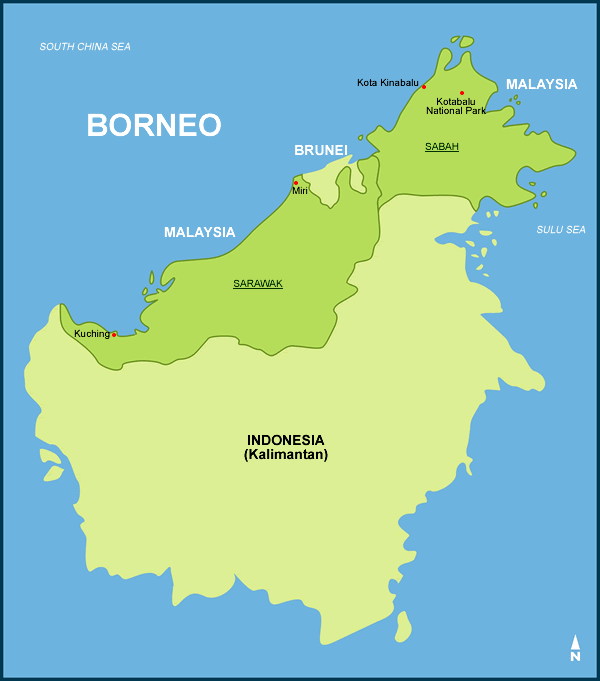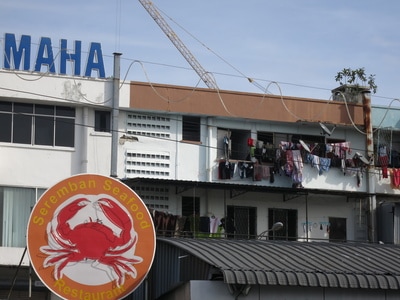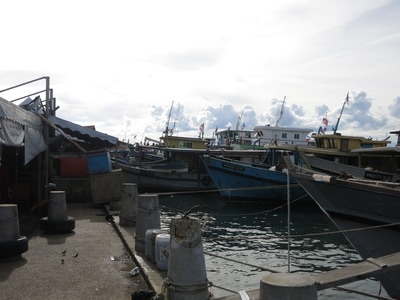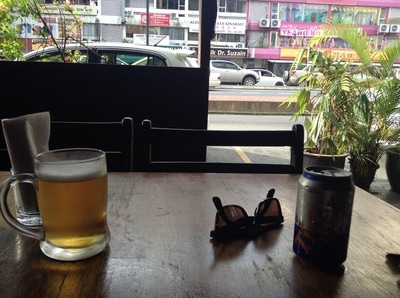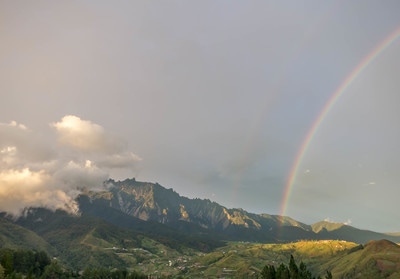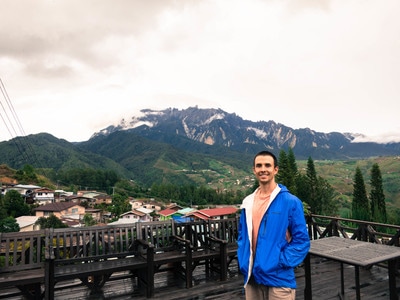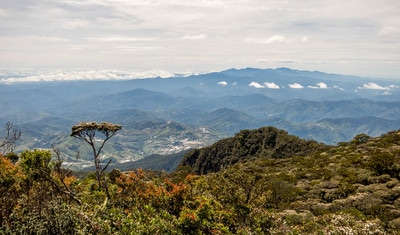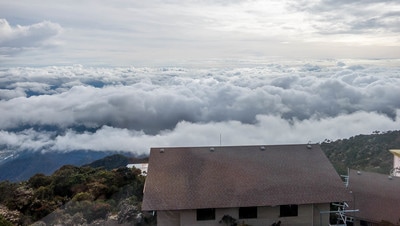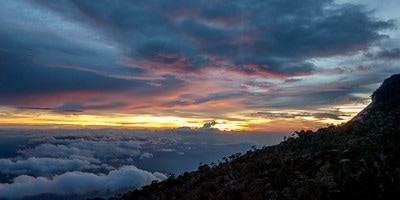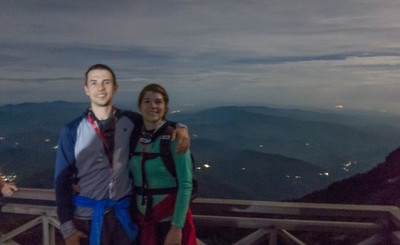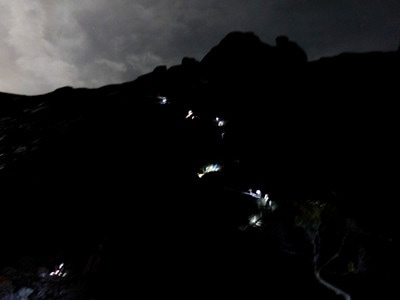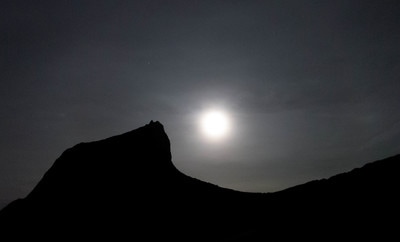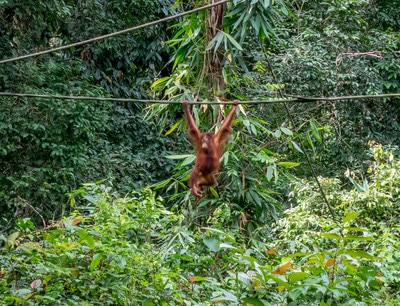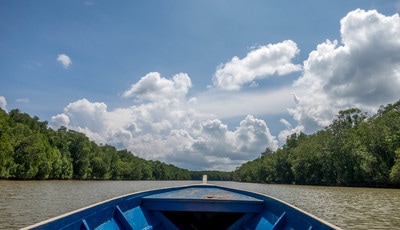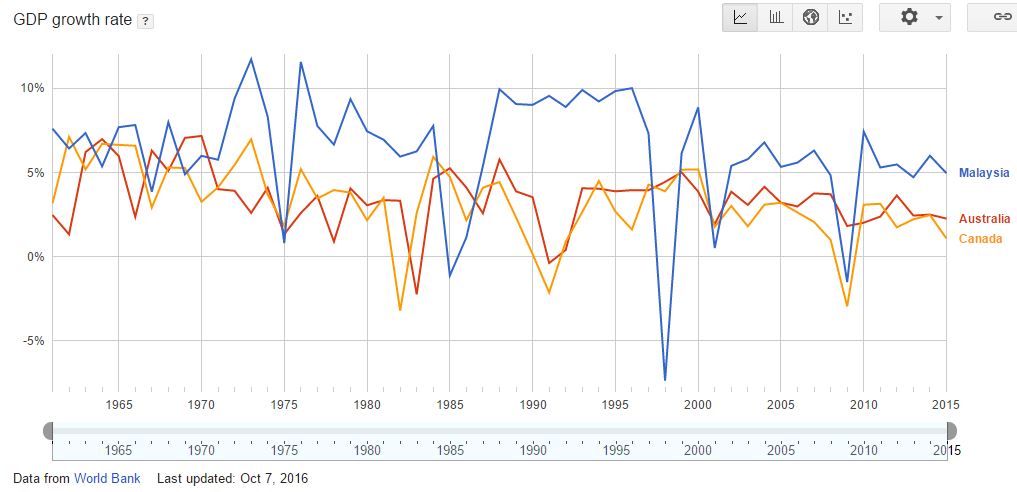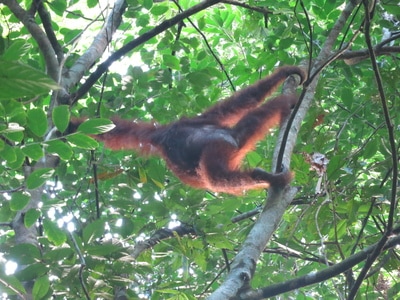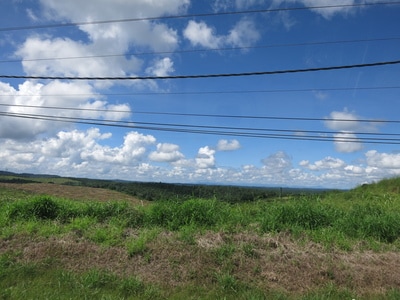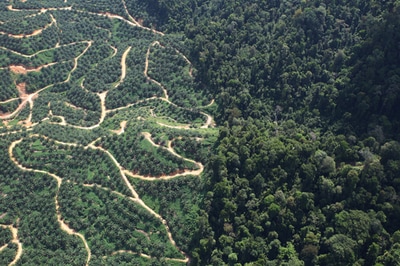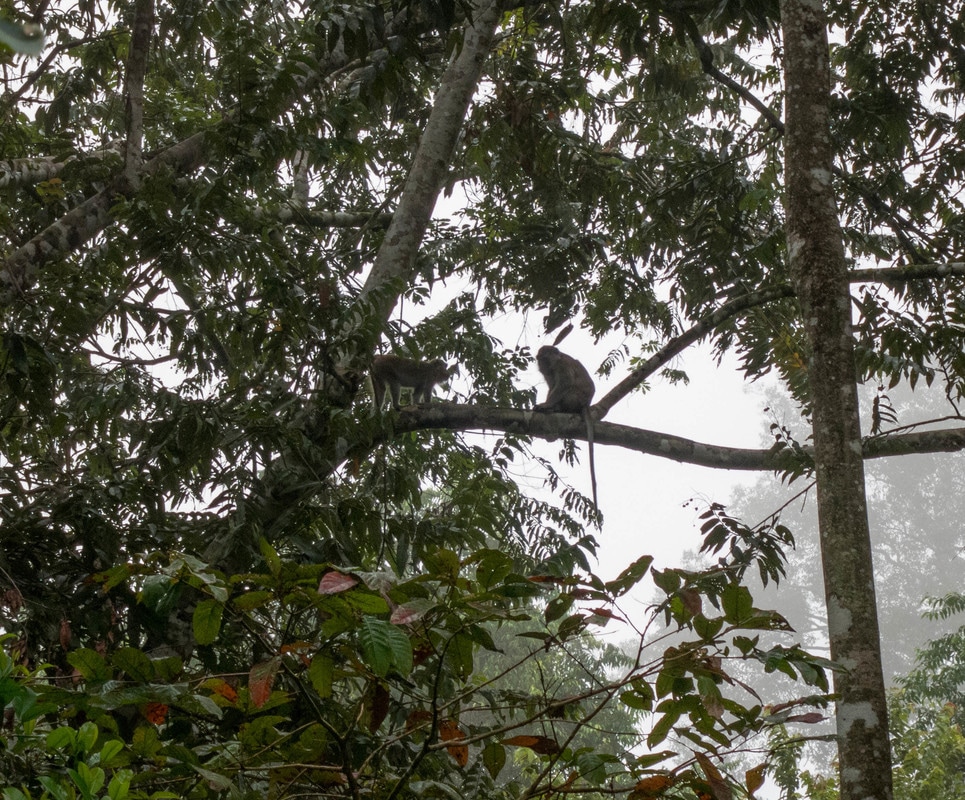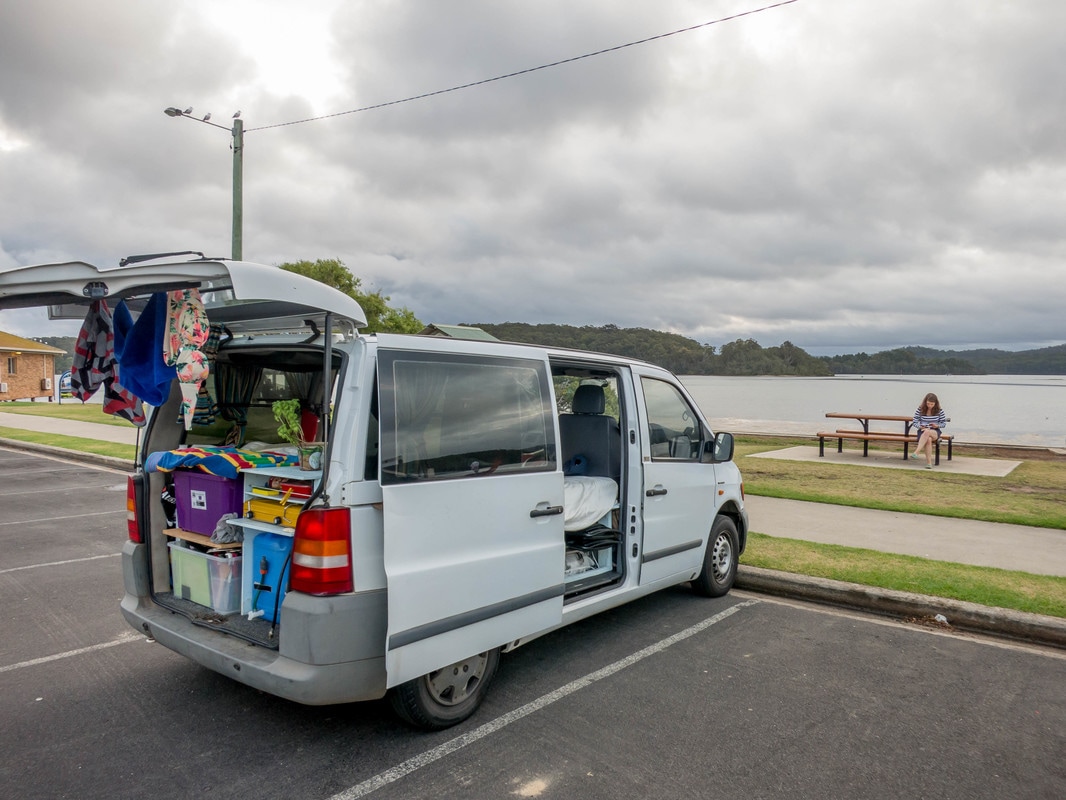|
As I've mentioned previously, before we came to Australia, we were a bit geographically ignorant of this part of the world. Lindy and I thought we’d be jet settin’ to and from Thailand, Singapore, Cambodia, etc. on long weekends from Sydney. Turns out the world is big, and you can’t really just fly a casual 16 hours for a three day trip.
SABAhIf you’re like me, than Borneo is probably little more than a mysterious place that your Dad would threaten to send you for misbehaving. In addition to an island prison for disobedient youth, Borneo is in Southeast Asia, and is actually larger than France by a comfortable margin. If you felt so inclined, you might go a step further and divide the island into three main regions; the tiny oil fueled nation of Brunei, two Malaysian provinces of Sabah and Sarawak, and the Indonesian Kalimantan. One island, three countries, 19 million people.
All that is great! It's an interesting contrast to Sydney and Singapore. And you know what, it's all still functional in its own bizarre way. Just watch your step for those random holes in sidewalks and 3 foot drop offs to the road. After a bit of a walkaround, and some fresh fish at the market (watch out for the popping eyeballs), we had that night and the next morning to get ready for our hike/climb. We hopped on our prebooked bus to the base of the mountain, which had us driving up windy motor ways from sea level, up to about 1,866m. I accidentally overpaid for our climb package, which included an unintended night at the Kinabalu pines, a modest, local resort. It was nice to have a room with a TV and your own bathroom for a change though. ALSO supper was included, which was absolutely fantastic. A large family was celebrating one of their children’s birthday and were taking photos, so I offered to take a photo of all of them with the cake. A few minutes later, they brought me over a huge piece of cake! Awesome. The resort also had karaoke every night! Awesome. So after some Nat King Cole and Adele, another sleep then Mt. Kinabalu. Real quick summary of the hike: Day 1 - Hike up from the Timpohan Gate to the Pendant hut (3,289m) in about 6 hours. Lindy and I did it in 3 ;) Day 2 - Hike from Pendant hut to Summit (4,089m), then hike down a bit for a Via Ferrata (Italian for Iron path, or something like that) then hike all the way back down to around 1,800m. This was Lindy’s first experience with altitude, only my second. You begin to experience symptoms of altitude sickness between 2,500 and 3,500 metres, and it worsens as you rise, unless you take time to acclimate. Basically, this happens when your brain doesn't get enough oxygen, and the higher you go, the less oxygen there is. Symptoms can range from mild nausea to headaches to dizziness, but they usually don’t get any worse than death. Yes, you will die from altitude sickness and the complications resulting from it, if you don’t decrease elevation and seek treatment. Though, this only usually happens at much higher altitudes (at least over 5,500m) Since you don’t have much time to acclimate for Mt Kinabalu, most people feel the effects in some capacity. I didn’t feel much more than general shortness of breath, however, I did have a pretty stressful time trying to get my breathing right so I could fall asleep night before. Lindy felt little sick towards the top the next day, but overall we both fared just fine. Also, it was a cool, dry 14-22 Celsius for this whole Mt. Kinabalu excursion. Paradise. Coming from weeks of 28+ in Sydney, and more recently 33-36 and 100% humidity, I just about wept with joy for being able to put on a jacket. Needless to say, the we had some of the best scenery I’ve ever witnessed. A beautiful sunrise from atop the highest point on the island, and clear skies. My luck for weather during key moments continues its streak (it rained the day before and the day after we got there) Jungle + Orangutans = money + ControversySkipping past the seaside town of Sandakan, where we had a a great roof top dinner with recently met Melbourner (Melbournite? Melbournian?), Corey. We also had our first bit of “oh, Lindy and I are the only white people here.” and of course, some jungle trekking. We saw lots of cool wildlife, orangutans, killer centipedes, macaques; ate some of the best and biggest shrimp/prawns we’d ever had, and all sorts of other nice things. (Geopolitical message warning: IF you read the clichés blog, you should have expected me to write a post like this sooner or later!) I read this in a book once, so obviously it’s true. Every country goes through a phase where it treats its environment like crap. Be it hunting animals to extinction for sport, logging away forests, depleting fish banks, or simply pumping spent fossil fuels into the air. Nations typically do this when they are developing; in their infancy, or when quick economic growth seems imperative.
Back to Borneo. Malaysia is in a stage of quick development, high population and economic growth year over year. Just like all those other mentioned countries have done, Malaysia is fueling this growth at the expense of the environment. Malaysia produces almost 27x more palm oil than the next largest national producer, using almost around 15% of it's total land area. That'd be like if Canada devoted the ENTIRE land area of Quebec to a single crop. If you have never heard of palm tree oil, that’s fine, It’s not a widely discussed topic. But palm tree oil is basically in every consumer good that is not a “premium” product, it's in about half of all the products in the grocery store, according to WWF. Palm tree oil comes from specific types of palm trees. Specific types of palm trees come from Borneo. Everything from Oreos to Snickers, or body wash to toothpaste can contain palm oil. It's basically a filler that is very effective in a wide range of consumable products. Since the countries that produce it have such low wages, more companies can buy it up for relatively cheap. So why is this a big deal? Cheap chocolate never hurt anyone! Buttt as an economics professor once taught me, “there is no free lunch”. In this case, the Bornean rainforest and its inhabitants are paying for the lunch. I am not saying anyone is at fault here, I mean, Malaysia is doing what other countries have done when they were in similar positions, and we were all “allowed” to do it, so why not they? And with the opaqueness of product labeling and origin information, the end consumer can hardly be blamed either. But right now there is tremendous demand for palm oil, so forests keep getting chopped down so that more palm trees can be planted. Maybe just check out the labels on some stuff, if you see palm (or palm kernel, or palm tree etc..) oil on the ingredients, perhaps think about upgrading products :) Back to fun travel stuffJust like most every place I’ve been, 10 days in Borneo was enough time to realize that I could certainly spend more than 10 days in Borneo. C’est la vie! Also, Singapore was great. We were only there for three nights, but man, it’s pretty vibrant. Delicious food and a functionally unique blend of Asian cultures, all condensed on to the tippy bottom tip of the Malay peninsula. I have some catching up to do, particularly on the following items:
6 Comments
|
|
Proudly powered by Weebly
